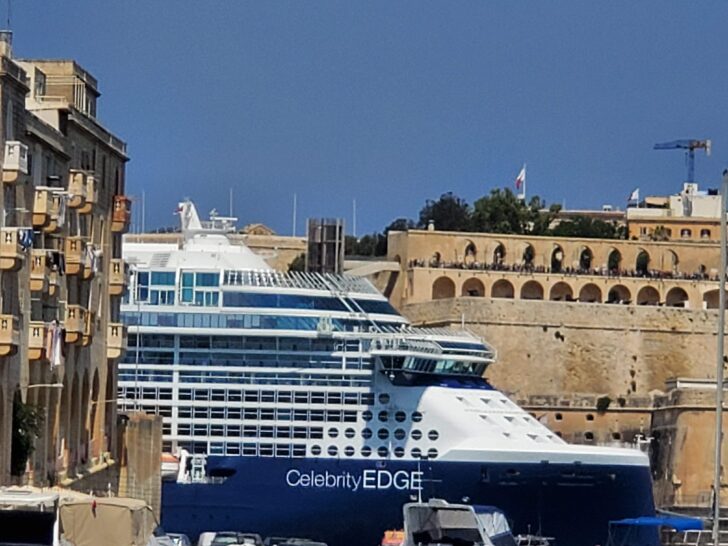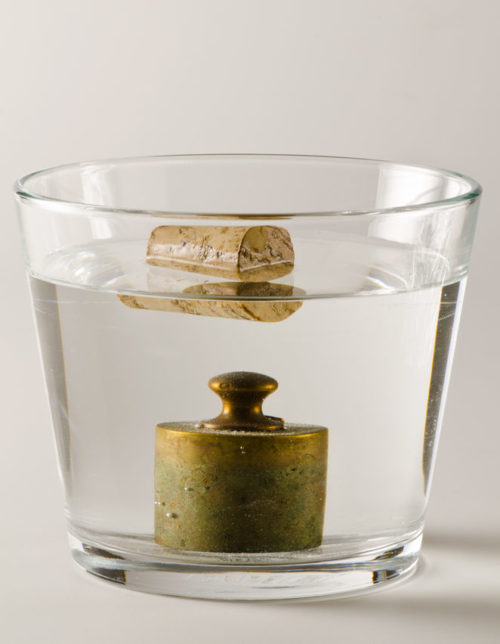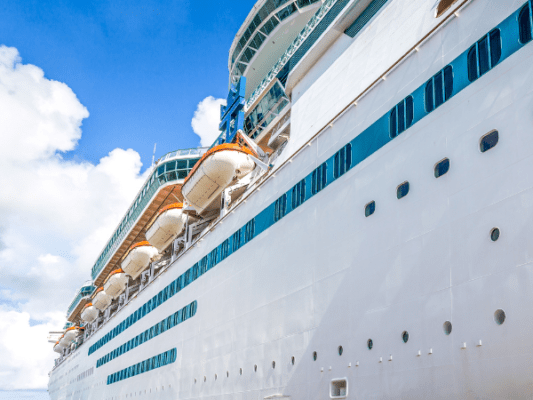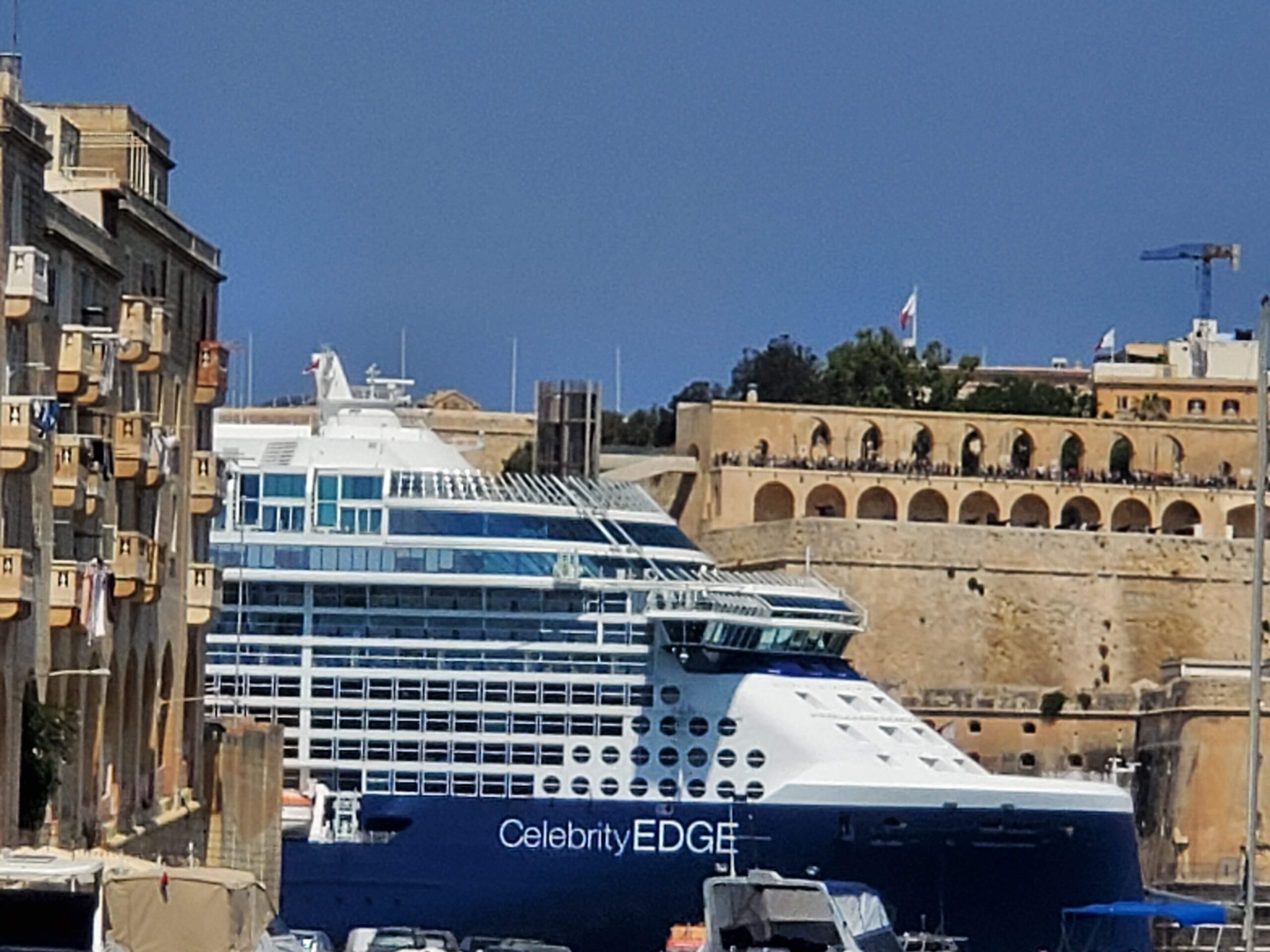What do you think happens if you toss a big rock into the ocean? Typically, it starts to sink right away. But some objects that are many times heavier manage to stay afloat. One such example is a cruise ship, and there is no better example than the largest one in the world, “Wonder of the Seas”. It has a tonnage of 236,857 and is 1,188ft long and 210ft wide, so at that size, why do cruise ships float?

Here’s the short answer: Giant cruise ships can stay afloat because they can displace an amount of water that is equivalent to their mass. While the vessel is propelled forward, it forces the water away, but the water attempts to return, ultimately creating a force that pushes the ship upward. Let’s take a closer look.
How Cruise Ships Float
Cruise ships have a mass that is upwards of 65,000 tonnes (71,500 tons), and not only do they have to keep that weight afloat, but there is also the burden of the crew, passengers, luggage, supplies, and all the various additional amenities aboard the vessel.
So, why do cruise ships float? It seems utterly illogical that something that weighs that much could possibly float. But just like airplanes can stay in the sky, there is a science behind why cruise ships can float. The way that they can stay afloat has to do with displacement, along with principles pertaining to density and buoyancy.
Engineers will, therefore, not address the mass or weight of the ship when talking about how heavy it is; instead, they will reference displacement. The vessel displaces the equivalent amount of water to their mass when they sit in the ocean, which keeps them buoyant. In theory, it is possible to submerge a cruise ship; plenty of them have sunk (we will get to that in a bit).

But ultimately, what they need to do is displace their weight in water before it is submerged. Think of it as though you were trying to sink a bowling ball, as opposed to something like a soccer ball, or football. The latter possess a certain weight but can displace the water, whereas the bowling ball cannot. This is because soccer balls and footballs contain an open, air-filled interior (much like a cruise ship).
The Concept Of Buoyancy And Cruise Ships
It is not only displacement that aids in the cruise ship’s managing to stay afloat; there is also the science of buoyancy, and we have Archimedes to thank for discovering and explaining the principle. He was a Greek scientist who discovered Archimedes’ Principle (the principle of buoyancy) back in 246 BCE. He stated:
“Any object, totally or partially immersed in a fluid or liquid, is buoyed up by a force equal to the weight of the fluid displaced by the object.”
So why do cruise ships float? Basically, the force, known simply as buoyant force, comes into effect when the ship can displace an equal amount of water as its mass. The force of gravity and the vessel’s mass exerts a downward force, all while the buoyant force pushes upwards against the ship. Then ultimately, if the downward force is less than the buoyant force, the cruise ship will float.

It Has Less To Do With Weight And More So With Empty Volume
Cruise ships of the past have nothing on modern-day cruise ships, especially regarding size and mass. They are literally floating cities, with movie theaters, restaurants, casinos, bars, bowling alleys, swimming pools, and other things to keep their guests entertained. So what else separates them from, say, a solid piece of steel? The answer is empty volume.
The incredible amount of open space is staggering, even considering how much is crammed onto a cruise ship. However, there is a lot more space than you would think there to be in a cruise ship, and if we look at the example of a piece of steel, it is merely a solid object with absolutely no empty volume, and for this reason, it will not float, but the cruise ship will.
The Shape Of A Cruise Ship Hull Helps It Float
Large ships such as cruise ships use displacement hulls, which aid with displacement, as the name suggests. As mentioned, these hulls push the water out of their way, and it resultantly tries to refill the space, causing the ship to stay afloat. Nowadays, cruise ships are made with the lightest and most buoyant possible material, but it is simultaneously incredibly durable and hardy.
Cruise ships possess round-bottom displacement hulls that resemble rectangles that have rounded edges. The hulls look much like a giant “U”, and their roundness aids in dissipating drag. The cruise ship also manages to move more fluidly along the water owing to this shape due to there being less force applied to it as it is propelled through the water.
Although they move more fluidly, there is also increased resistance against the water, and they resultantly move far slower than other types of boats and sea vessels. Ultimately, we see that the engine power that propels them forward reaches a point where, regardless of how much drive is exerted by the propellers, the cruise ship will do just that, cruise.
Although a cruise ship can go fast, there is no need for a cruise ship to have excessive speed potential; instead, a smooth and stable movement across the ocean is preferred; therefore, the “U” shaped hull is a perfect fit for the needs of cruise ships.
What Causes A Cruise Ship To Sink?
There are countermeasures put in place to help prevent a cruise ship from sinking; these are known as bulkheads (these come into play if something penetrates the cruise ship). They are found throughout the vessel’s hull and are vertical, watertight dividers that, if the ship is struck by something or damaged in some way, will enable the ship to stay afloat.
The way these bulkheads manage to do this is that they will contain any influx of water within a compartment; so that it does not spread throughout the remainder of the hull. So even if the ship takes on water and is going to sink, the bulkheads will buy the crew time to get all the passengers into lifeboats and themselves in ample time.
The ship’s sinking only occurs because the air in place is forced out and replaced with water. This means that the vessel is no longer buoyant enough to stay afloat and cannot displace its weight. Likely the most famous of these events was the sinking of the RMS Titanic. The ship struck an iceberg that pierced the hull, and water filled the bow, ending in the entire ship sinking.
Closing Thoughts
Although weighing many tons, a cruise ship will float on the ocean with ease. Principles of basic physics explain why cruise ships float. It comes down to how their weight is distributed, and how they are able to displace water in their path.


